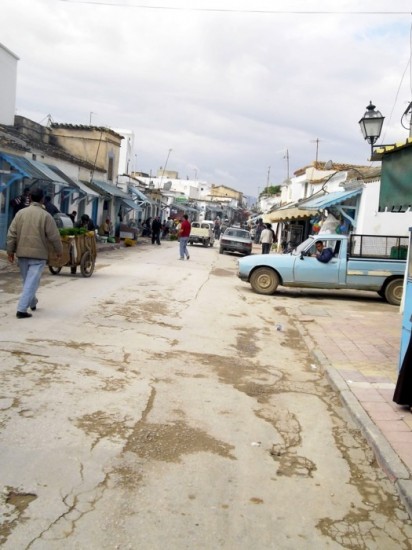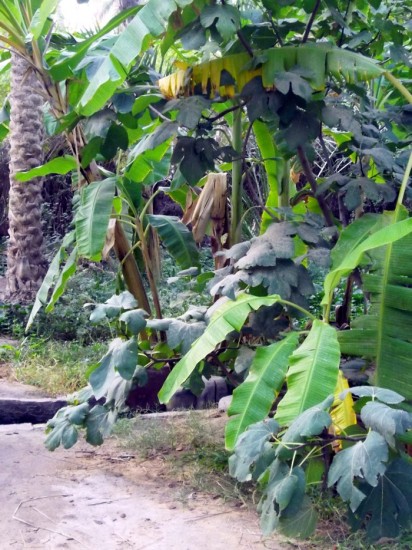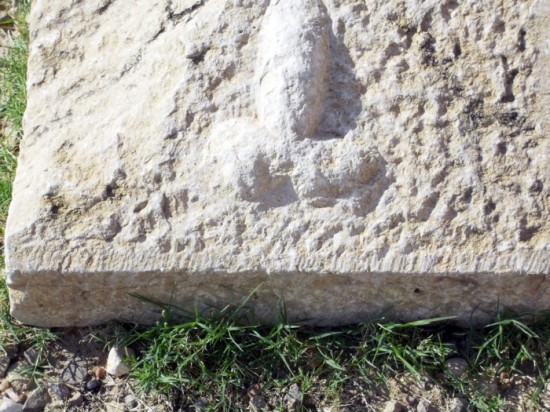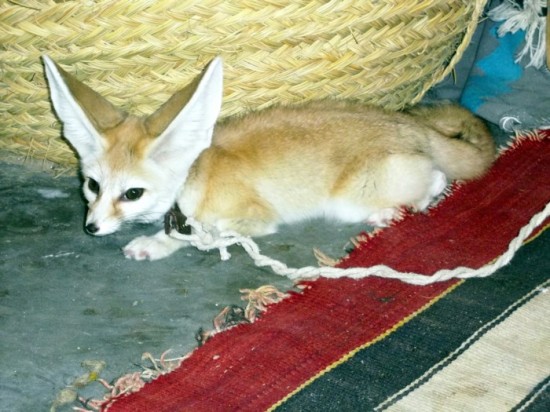Our recent trip to Tunisia was not an outstanding success for us. True there was a small but pleasant group of people and as a quick all round insight into Tunisian life, the trip was quite satisfactory but the guide, not being an archaeologist, was not knowledgeable about Tunisian history especially the Roman/Phoenician sites.
We left Tunis early in the morning and headed south to Testour a small settlement founded by Muslims fleeing Spain after the reconquest (La Reconquista) of the country by the Catholic Kings. It is famous for its blue doors which give a festive air to an otherwise impoverished and dust filled little town.
 We next rollicked along in our tiny bus to the hilltop site of Dougga. Its size, its well-preserved monuments and its rich Numidian–Berber, Punic, ancient Roman and Byzantine heritage make it exceptional. Dougga was an important rallying point for various tribal kings who allied with Rome against the Carthaginians and it became a strategic centre too for the Romans who spared this town after sacking Carthage in 146 BC. It was annexed to Rome by Caesar in 46 and as a Roman town it grew prosperous but from the third century onwards, with the fall of Rome, Dougga started to decline. It was abandoned and deserted with the Vandal invasion, and since then there has only been a small village on the other side of the hills. This probably explains why it is so rich in monuments: it wasn’t near enough to other settlements for its stones and masonry to be re-used.
We next rollicked along in our tiny bus to the hilltop site of Dougga. Its size, its well-preserved monuments and its rich Numidian–Berber, Punic, ancient Roman and Byzantine heritage make it exceptional. Dougga was an important rallying point for various tribal kings who allied with Rome against the Carthaginians and it became a strategic centre too for the Romans who spared this town after sacking Carthage in 146 BC. It was annexed to Rome by Caesar in 46 and as a Roman town it grew prosperous but from the third century onwards, with the fall of Rome, Dougga started to decline. It was abandoned and deserted with the Vandal invasion, and since then there has only been a small village on the other side of the hills. This probably explains why it is so rich in monuments: it wasn’t near enough to other settlements for its stones and masonry to be re-used.
We stayed the night at the small town of El Kef known for its Kasbah which the French reconstructed and used as a military barracks during their colonial days. It is an important holy site for Sufi Muslims and has a shrine to a well known Sufi Saint – Sidi Bou Makhlouf. The guide forgot to mention that the Algerians used it as a command centre during the Algerian War of Independence in the 1950’s and it was also the provisional capital of Tunisia during World War Two.
Later, we drove on to Makthar to visit the ruins of this extremely ancient pre-Roman fortress which the Numidians used to control the comings and goings of the nomads (mainly Berbers, the original inhabitants of Tunisia). It became even more important after Caesar annexed it in 46BC but suffered the same fate as Dougga under the Vandals and was abandoned in the 11th Century. There were enough remaining ruins for us to get a picture of how idyllic these places were for retired Roman soldiers and well-off colonisers.
After lunch, our destination was Kairouan, the spiritual capital of Tunisia and foremost holy town of North Africa for Sunni Muslims after Mecca, Medina and Jerusalem. It was the first city to convert to Islam and was called the city of 300 mosques. 120,000 pilgrims come here each year.
 We stayed the night in Sufetula (Sbeitla) and explored the Roman remains of this superb site the next day. This region was populated in 67-68 AD after various conquests of local tribes under the emperor Vespasian – he who invented the famous ‘pissoir’ still called in French ‘la Vespasienne’, a malodorous example of which existed in my local Lisieux Farmers’ Market for many years next to the Fish Market where it was relatively undetectable. Most remarkable of the few constructions still standing were the three temples dedicated to Juno, Jupiter and Minerva – a Roman equivalent of the three tenors perhaps, for they each have a temple here instead of sharing one huge one as in most Roman sites.
We stayed the night in Sufetula (Sbeitla) and explored the Roman remains of this superb site the next day. This region was populated in 67-68 AD after various conquests of local tribes under the emperor Vespasian – he who invented the famous ‘pissoir’ still called in French ‘la Vespasienne’, a malodorous example of which existed in my local Lisieux Farmers’ Market for many years next to the Fish Market where it was relatively undetectable. Most remarkable of the few constructions still standing were the three temples dedicated to Juno, Jupiter and Minerva – a Roman equivalent of the three tenors perhaps, for they each have a temple here instead of sharing one huge one as in most Roman sites.
Obviously, the inhabitants were richer and more thankful for their good life which depended on the trade in olives and olive oil, attested to by the Roman grinding stones so similar to our apple grinding stones (pressoirs en granit). Life here was obviously prosperous, peaceful and harmonious, attested to by the existence of seven Christian churches, a baptismal font and a ‘pleasure dome’ in the form of a well-advertised brothel.
More interesting for British tourists was the plaque over one of the town gates dedicated to Antoninus Pius and his two adopted sons, Lucius Verus and Marcus Aurelius. It was Antoninus who built the Antonine Wall across the north of Britain above Hadrian’s Wall when the invading horde of Picts came down like a wolf from the fold. The Vandals did the same to Sbeitla but occupied the town until the Byzantines re-took it then it was sacked by the Arabs in 647 and fell into oblivion.
The afternoon was dedicated to Tozeur, one of the most famous oases in the world on the fringe of the desert surrounded by 7000 acres of date palms and other astounding greenery.
 Decoratively built of narrow white bricks, hand crafted in local brickworks which sit in a lunar landscape, Tozeur mainly caters to desert trekking groups and this is where we met the desert fox, as we set forth on our camels like Omar Sharif in Lawrence of Arabia.
Decoratively built of narrow white bricks, hand crafted in local brickworks which sit in a lunar landscape, Tozeur mainly caters to desert trekking groups and this is where we met the desert fox, as we set forth on our camels like Omar Sharif in Lawrence of Arabia.
Photo Credits
All Photos By Julia McLean – All Rights Reserved





Please Share Your Thoughts - Leave A Comment!